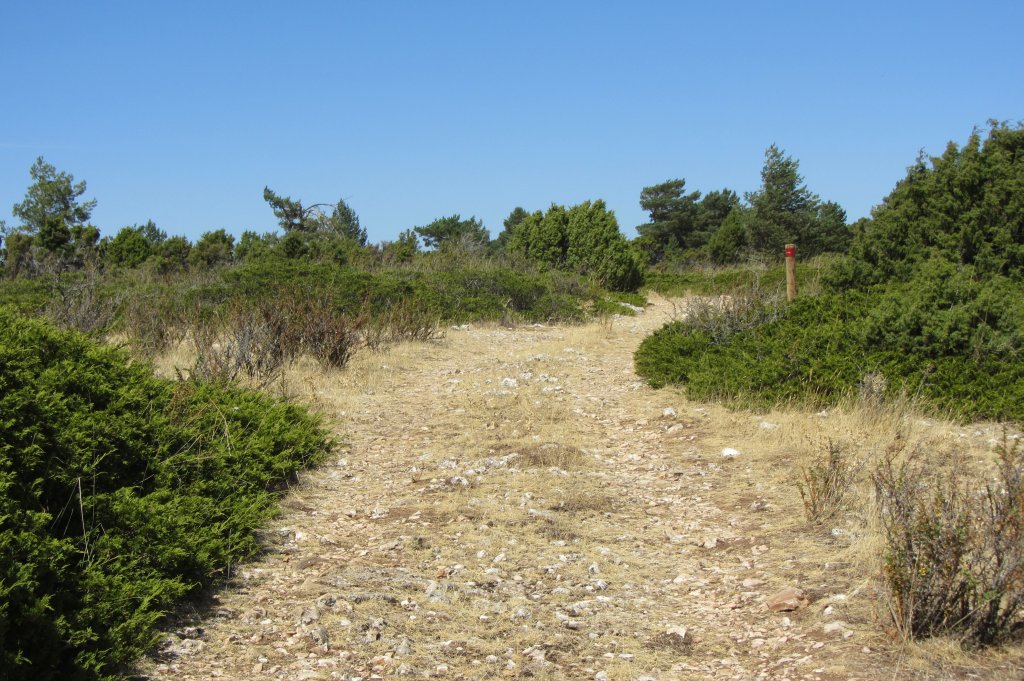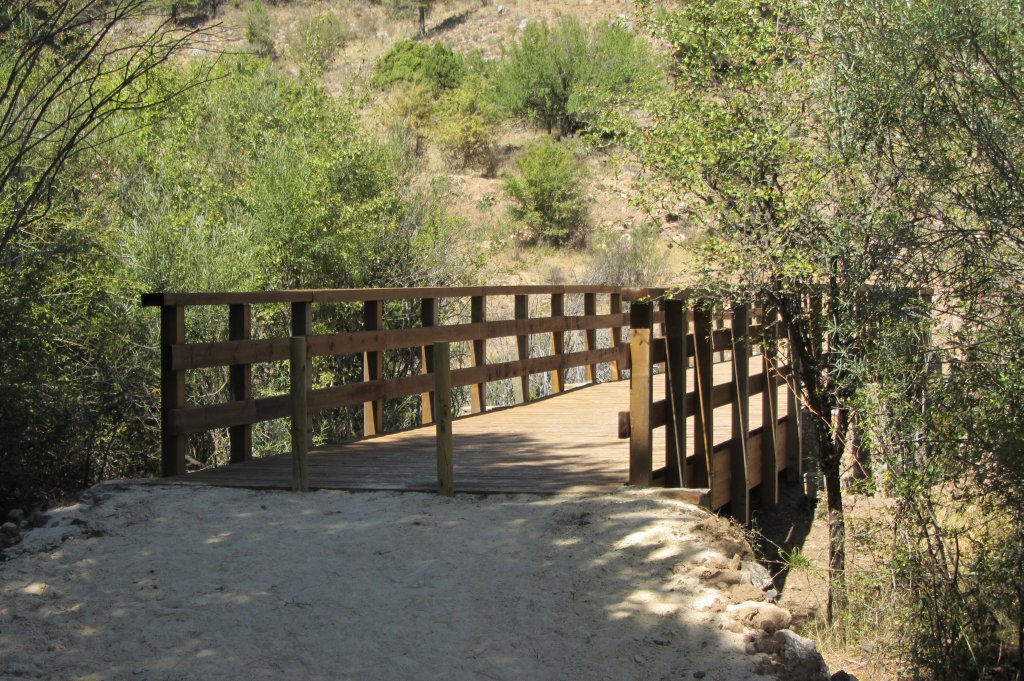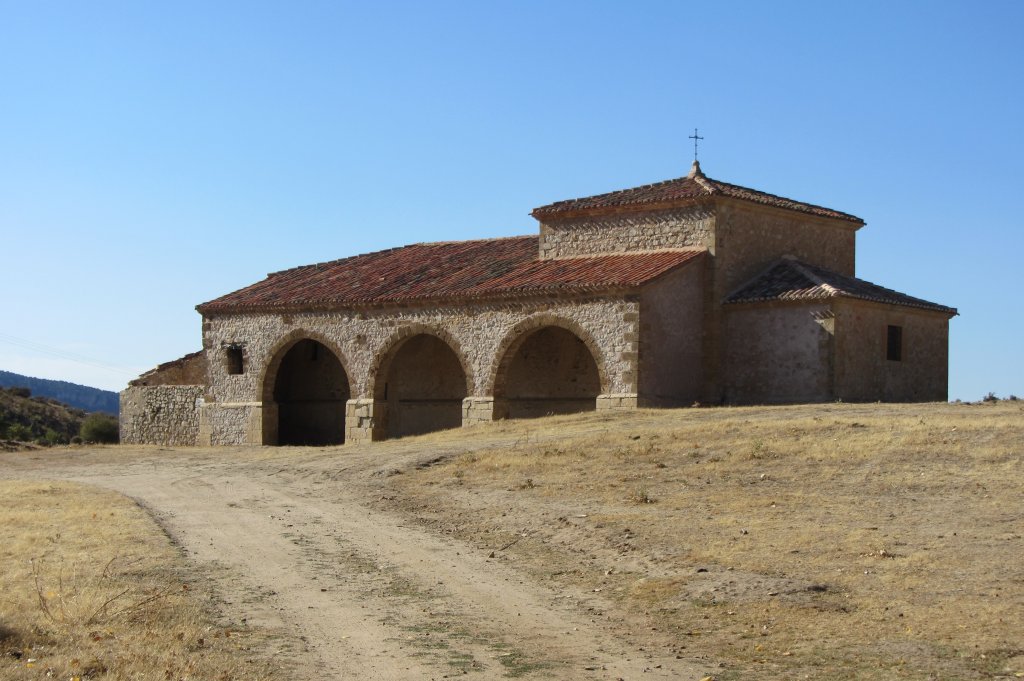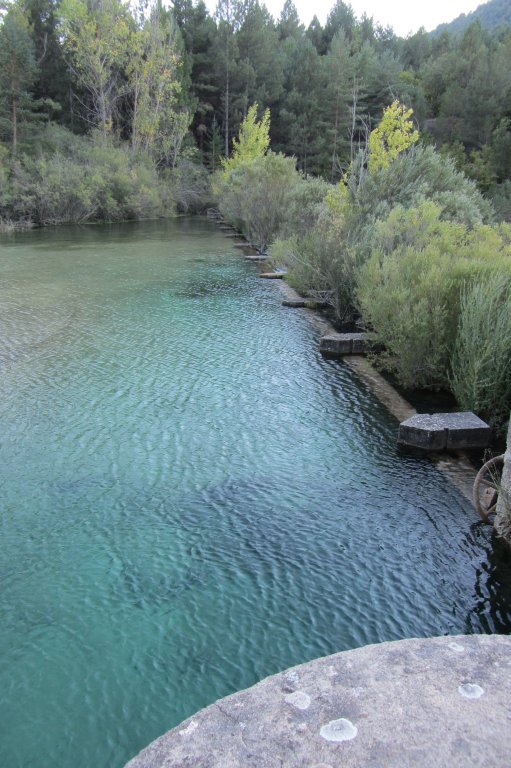Stage 3: Ermita de San Lorenzo - Peralejo de las Truchas
Description

The River Tagus Canyon
The Stage travels through the River Tagus Canyon, located in the upper reaches of the river. The high ecological value of the gorge and cliffs, and the wildlife within, is reflected in the designation of the site as the Alto Tajo SCI and SPA.
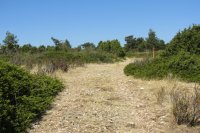
The third Stage of the Nature Trail begins at a recreational area, equipped with tables and benches, near the San Lorenzo Shrine. It heads uphill to Sarguillas along a stony path surrounded by junipers (Juniperus sabina). The typical juniper and pine landscape has been shaped by the harsh weather conditions, with cold winters and very hot summers.
The path continues until the tail of Las Sarguillas Ravine, then ventures into the area known as El Navazo, dominated by Scotch or Scots pine (Pinus sylvestris) with sabines populating only the areas of highest sun exposure.
Several kilometres after, the route reaches a clearing with a viewpoint over the Hoz Seca River Gorge. The majestic views highlight the shapes carved by the river and the vegetation blanketing the slopes.
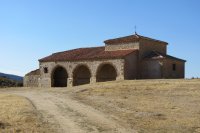
The route descends to the edge of the river (20 min) along a slightly steep, zigzagging path. The banks are populated with riparian plants and species that grow in shady areas, including holly (Ilex aquifolium). The route crosses a wooden walkway over the Hoz Seca Brook to an interseccion, where the path turns left towards an old smithy, and continues along a wide track leading to Peralejos.
The route continues northwest along mostly level terrain, flanked by rocky cliffs. It crosses three brooks, and a few metres after the last one, arrives at an intersection where the Ribagorda Shrine is located. The area surrounding the shrine offers extraordinary views, including the Rochas de Belvalle topped by El Machorro and Poyal de los Corzos cliffs, the two Muelas de Pinariegas , gorges along the Tagus, and the impressive Encarcelados Ravine.

The route heads west from the chapel towards a site known as Quebrantadas. At the next fork, the path veers northwest until it intersects a road with which it overlaps over a long stretch. The route turns right at a sharp bend further down the road to continue north.
The route continues until it crosses a brook and arrives at a hotel. The last kilometres of this Stage run parallel to the River Tagus along its right bank, with numerous viewpoints from where the meanders, cliffs and crags can be contemplated.
Next to the hotel's parking is a path leading to a dam on the River Tagus with a fish ladder. Leaving the hotel behind, the route continues to a junction where it turns to the right, and just over one kilometre later, looming ahead are the houses of Peralejos de las Truchas, and the end of this Stage.
Profile
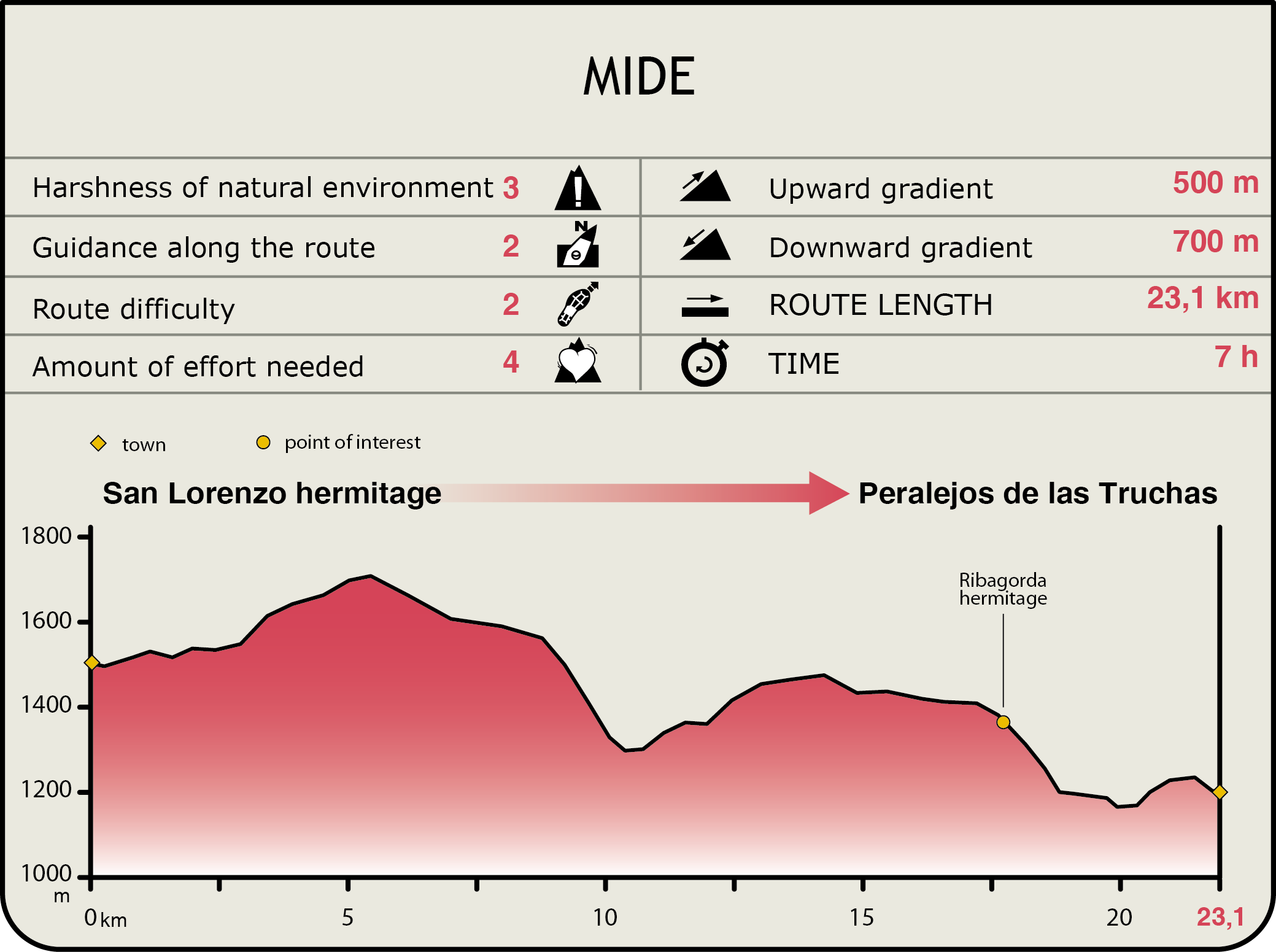
MIDE (Method for the Information of Excursions)
Featured
Further information
Life in the cliffs
The territories of the Golden Eagle (Aquila chrysaetos) the largest Iberian eagle, run parallel to the course of the local rivers, sometimes alternating with those of Bonelli's Eagle (Hieraaetus fasciatus), with which it clearly competes.
Bonelli's Eagle is somewhat smaller than the Golden Eagle, and both species show a predilection for nesting in the rocky cliffs. Their nests can be frequently seen close to those of the Griffon Vulture (Gyps fulvus). This beautiful raptor, whose populations are declining at an alarming rate, have high juvenile mortality and are highly sensitive to human activity during the nesting season.
The Egyptian Vulture (Neophron percnopterus) is a scavenger that feeds on carrion. Although it shares the food with other vultures, unlike these, it does not live in colonies, but rather, each pair has its own territory.
The most typical and abundant scavenger in this area is the Griffon Vulture (Gyps fulvus). These birds live in colonies, building their nests close to each other in the limestone cliffs, forming the so-called "buitrera”.
The Alto Tajo Nature Site boasts a wide variety of wildlife, evidenced by the existence of more than 200 different species. Indeed, the fact that all levels of the food chain are well represented means that this is a stable community with a rich variety of ecological niches.
